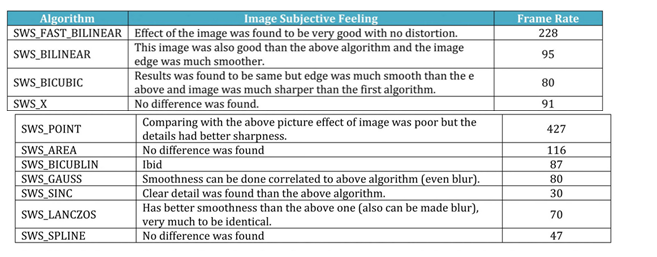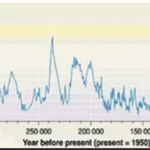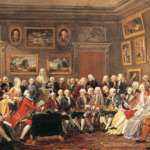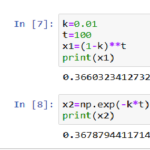Scaling with JSVM DownConvertStatic.exe
There are many techniques to scale images, most popular are Nearest Neighbor, Bilinear, Bicubic, Spline, and Lanczos.
The Nearest Neighbor considers the closest pixel, Bilinear – the closest 2×2 pixels, Bicubic the closest 4 × 4 pixels. Spline and Lanczos consider more surrounding pixels. If we denote ‘–>’ as less complex the above-mentioned techniques are ordered as follows:
Nearest Neighbor –> Bilinear –> Bicubic –> Spline –> Lanczos
The following quote is taken from the book “OpenCV 3.x with Python By Example – Second Edition“, the section “Image Scaling”:
“If we are enlarging an image, it’s preferable to use linear or cubic interpolation. If we are shrinking an image, it’s preferable to use area-based interpolation.
Similar results are reported in the paper – there is a difference in best up-scaling and down-scaling methods.
- For up-scaling 1024×768 to 1920×1080 of 24-bit RGB ranging of LibAv scaling methods (a part of ffmpeg):

So, SWS_BILINEAR is best method for up-scaling – no visual distortions and high processing rate . BICUBIC is apparently better in quality but the processing rate is relatively low – 78fps.
- For down-scaling the results are different

SWS_BILINEAR is not best solution for down-scaling, the best solution is SWS_AREA , no visual differences and high processing rate.
Notice, in the paper “Comparison gallery of image scaling algorithms” bi-cubic method seems a good, although and not the best.
How Perform Scaling with ffmpeg
1) Decode and scale with Lanczos method to the resolution 352×288, output is stored in y4m raw video format
ffmpeg -i crowd.h264 -pix_fmt yuv420p -vsync 0 -s 352×288 -sws_flags lanczos -y crowd_cif.y4m
here, ‘-vsync 0’ is necessary, otherwise ffmpeg might discard frames
Note: instead of Lanczos technique you can choose:
‘-sws_flags bilinear’ , ‘-sws_flags bicubic’, ‘-sws_flags neighbor’ (the simplest method), ‘-sws_flags area’ , ‘-sws_flags spline’ etc.
Scaling with JSVM DownConvertStatic.exe
The repository https://vcgit.hhi.fraunhofer.de/jvet/jsvm.git contains JSVM (scalable h264) codec plus several tools. One of the tools is DownConvertStatic.exe – scaler of yuv files.
To build JSVM reference codec
1) clone JSVM
git clone https://vcgit.hhi.fraunhofer.de/jvet/jsvm.git
2) go to the folder jsvm\JSVM\H264Extension\build\windows and open H264AVCVideoEncDec_vc10.sln (if you have more advanced version of Visual Studio make retarget)
3) Choose Release/x64 and built the solution (some projects apparently would fail to be built).
4) exe-files are created at the folder jsvm\bin64
Usage:
DownConvertStatic input-width input-height input-yuv output-width output-height output-yuv method
method – 0 standard scaling method, 1 for dyadic scaling
Example: downscale 1920×1080 to 352×288
DownConvertStatic.exe 1920 1080 crowd_1920x1080_50fps.yuv 352 288 crowd_cif.yuv 0
Resampler
500 frames converted
in 9.64 seconds => 19 ms/frame
Note:
Upscaling interpolation-based methods (bilinear, bicubic, and Lanczos etc.), which are available in ffmpeg tool, update pixel magnitudes by weighted averaging of neighboring pixel values from a low-resolution original frame. These algorithms upscale pretty good smooth regions due to local similarities but they fail at abrupt spatial discontinuities (e.g. edges).
There are a class of upscaling methods, called “single-image or video super-resolution”, which takes into account edges and high-detailed areas. The goal of these super-resolution methods is to magnify an image while maintaining the sharpness of the edges and the details in the image.

23+ years’ programming and theoretical experience in the computer science fields such as video compression, media streaming and artificial intelligence (co-author of several papers and patents).
the author is looking for new job, my resume







I would like to thank you for the efforts youve put in penning this site. I really hope to view the same high-grade content by you later on as well. In fact, your creative writing abilities has inspired me to get my own website now 😉
Absolutely written content, Really enjoyed examining.
I went over this website and I conceive you have a lot of fantastic info , saved to favorites (:.
Well I truly enjoyed studying it. This tip provided by you is very practical for good planning.
You made some decent points there. I looked on the internet for the subject matter and found most guys will consent with your website.
pls. look at this page: https://en.wikipedia.org/wiki/Comparison_gallery_of_image_scaling_algorithms
I really appreciate this post. I’ve been looking all over for this! Thank goodness I found it on Bing. You have made my day! Thx again!
Only wanna comment on few general things, The website design is perfect, the articles is really wonderful : D.
very nice put up, i definitely love this website, carry on it
Very interesting information!Perfect just what I was searching for!
magnificent points altogether, you simply gained a brand new reader. What would you recommend in regards to your post that you made a few days ago? Any positive?